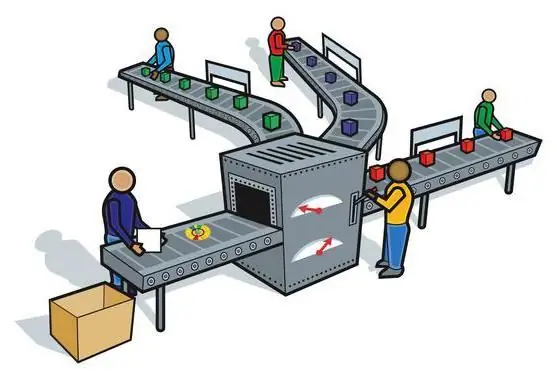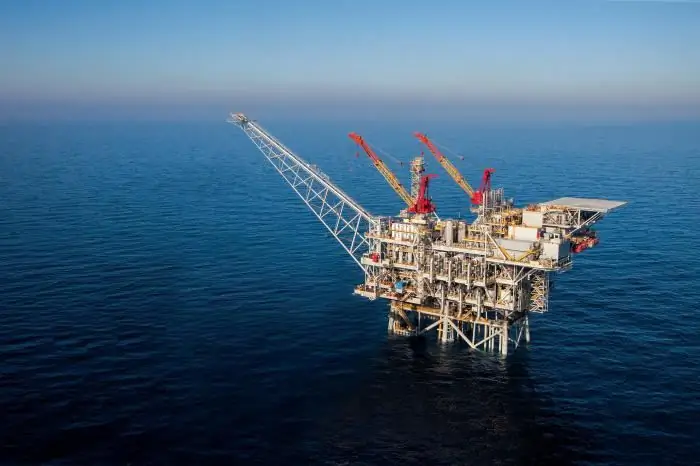2026 Author: Howard Calhoun | [email protected]. Last modified: 2025-01-24 13:10:39
Charcoal is one of the most ancient types of fuel. It is used not only for cooking and heating the house. It is used in the chemical and metallurgical industries, in animal husbandry and construction, medicine and pharmacology. Today, the bulk of charcoal is produced in small scale factories. The production of charcoal and its sale is a profitable business in areas where forests grow, and you can even organize it on your own country site.
Charcoalization process
As wood raw materials, not only firewood of various types of wood is used, but also waste from woodworking or furniture production: knots, hemp, sawdust. Peat is used in wetlands.
Wood in the process of charring goes through three stages: pre-drying, thermal decomposition and cooling.
Initial drying and heating of raw materials in the chamber is due to heat supplied from outside. Its own heat release process (chemical exothermic reaction) starts when the wood temperature reaches 280°C. Further supplyheat is no longer needed.
Finished coal after burning is cooled to a temperature at which spontaneous combustion of coal is impossible, that is, below 40°C.

During the first day, there is still a lot of water vapor in the mixture of flue gases and charring products, which are released during the drying process. The mixture then becomes drier and can be used as additional fuel in the same furnace or, more efficiently, in a nearby one.
Coal burning equipment
Charcoal burning furnaces of various capacities are used for the production of charcoal. It turns out such coal in the process of pyrolysis, that is, wood is burned without access to oxygen.
Charcoal kilns for the production of charcoal are available in stationary and mobile.
Stationary equipment is used by fairly large manufacturers for the continuous process of pyrolysis of large volumes of wood.

Large ovens are much more productive than mobile ones, they can use several types of fuel, but they have high environmental requirements.
Mobile kilns are small, low-capacity, and are used either where raw materials are available, such as logging sites, or where end products are needed, such as construction sites.

Mobile stoves are fueled by the same waste wood from which coal is produced.
IfIf the furnace runs on waste, the benefit is double, and coal is produced without additional fuel costs, and waste is processed, which would still have to be disposed of, spending money and time on it. This type of charcoal production is the cheapest.
Continuous charcoal burning equipment
A separate group is charcoal kilns, in which flue gases from burning fuel enter the chamber, pass through the wood, attach vapors and gases, which are products of drying and charring of wood raw materials, and go outside. In them, the pyrolysis process takes place most evenly, since the wood is in direct contact with the coolant supplied from below. But pyrogases contain a high concentration of chemical compounds, which are wood decomposition products, so additional equipment must be installed for useful use or combustion of pyrolysis by-products.
This is how continuously operating vertical retorts work, in the chamber of which wood is dried at the top, pyrolysis takes place in the middle layer, calcination of coal and its cooling - at the very bottom.
Charcoal kilns with replaceable containers or retorts also work continuously. The principle of operation of such plants is that each subsequent batch of raw materials is heated to the required temperature due to an exothermic reaction in the previous one.
In this case, the process of coal formation occurs in each retort independently of the others, and the furnace, into the furnace of which pyrolysis gases are discharged,located separately from interchangeable chambers.
Retorts and pyrolysis chambers are made of metal with thermal insulation.
Charcoal burning equipment of periodic cycle
The simplest design of a charcoal kiln is an ordinary two-hundred-liter metal barrel in which wood is placed and set on fire. Additional heat is not supplied, and steam gases are removed through a special small hole. The production of low-quality coal, with a yield of less than fifteen percent, is dirty, but practically cost-free.
Today there are designs of charcoal kilns in which the walls of the chamber are heated with a coolant, from which heat is transferred to the firewood in it. These are, as a rule, charcoal kilns of a periodic cycle, where, at certain intervals, the whole process of coal burning takes place: firewood is loaded, re-charred, finished coal is unloaded, firewood is loaded again, and so on.

In mixed-action machines, wood is periodically loaded and finished coal is unloaded, but some part of the wood is always in the process of pyrolysis.
Kilns can also be made of metal or brick.
Three-chamber charcoal kiln
The vapor-gas mixture, which is discharged from the pyrolysis chamber, condenses upon cooling. Pyrolysis liquid (liquid) and non-condensable gases, since they are not yet widely used, are used as additional fuel in the combustion chamber. Withdrawal of sideproducts for afterburning is provided by the design of the furnace. The effect of this design is not only to save fuel, but also to protect the environment.
Three-chamber charcoal kilns provide a continuous cycle of coal production. In each chamber, one of the stages of the cycle takes place separately, and the initial drying of the raw material occurs due to the heat that is obtained during the combustion of pyrolysis gases. In addition to saving fuel, such furnaces have many other advantages. Since the loading of wood and the unloading of finished coal occur at different times, the service personnel are loaded more evenly. The cost of a three-chamber furnace is lower than that of a single-chamber furnace of the same size, and the efficiency and service life are higher due to load sharing.
Such equipment is designed for long-term operation in large-scale industries, and if it is equipped with a gas-generating boiler, then sawdust and shavings can be used as fuel.
Single chamber charcoal kiln
Charcoal in small quantities (up to 8 tons per month) can be produced in a single chamber kiln. The full production cycle depends on the model of the device and may take 1-3 days.
Such an oven can be used in private households, in public catering establishments, in order to dispose of production waste and substandard products at small woodworking enterprises.

The principle of production in them and large industrial furnaces is no different. Single chamber ovens are usually smallersizes, raw materials are also loaded into them less, but they also take up less space, they are easy to transport if necessary.

Abroad, there has long been a production of charcoal kilns for home use. Grilled or BBQ dishes are cooked on sustainable charcoal.
Features and design of charcoal kiln
Manufacturers of charcoal kilns, both foreign and domestic, indicate the working volume of one chamber and the total number of chambers in the kiln as the first characteristic. Then, the volume of firewood with a given size and humidity is usually indicated, which can be loaded into the oven at a time. This indicator is important for compliance with the next parameter - the duration in hours of the main work cycle.
To determine the efficiency of a particular model, two parameters are set for wood of the same species - the estimated amount of firewood loaded into the pyrolysis chamber and the output of coal from them.
The last are the overall dimensions of the furnace and its weight. If the device is not going to be transported, this data may not play a special role, but during transportation it can become decisive.
As a rule, a household single-chamber stove is a metal barrel laid with a slight slope or mounted on supports with a firebox built into the bottom.
The firebox itself, the furnace body, the pipe box and the manhole door are made of steel with a thickness of at least 3 mm, and the outer skin is 1 mm.
Double-sided welds thatshells of the body are connected, reinforced with bandages, which are made of a rectangular pipe, give rigidity to the structure and additional strength, if pressure suddenly increases in the tank.
In order to reduce heat loss, thermal insulation material is laid between the camera body and the outer skin. This measure increases the efficiency of the furnace. The walls of the firebox are lined with refractory bricks from the inside.
Devices for afterburning char products can be supplied separately.
Charcoal kiln do-it-yourself
A barrel on a stand is the simplest design, but for greater efficiency and fire safety, the barrel must be installed on a non-combustible base or buried in a hole.

You can make your own charcoal kilns from brick or metal. The drawing can be found on the Internet, as well as quite detailed descriptions. True, it must be understood that the quality of a home-made furnace and the final product is much lower, and there will be no large volumes of coal.
In the summer cottage you can make a coal pit, or you can build a charcoal furnace from barrels. To do this, you need to dig a hole of such a diameter that a barrel can fit in it, which must also be lined with bricks, cut a hole in the bottom of the barrel with a diameter of approximately 100 mm and put it in the hole with the hole down.
Then you need to overlay the barrel with bricks, close the cracks at the top with some fireproof material, insulate the upper bottom with mineral wool. That's all, you can get your own coal forfireplace and barbecue.
Two barrel design is more efficient and more reliable. The container, which is two times smaller in volume, is placed in a large one, filled with firewood and tightly closed with a lid, and small-fraction wood waste is poured into the space between the walls and set on fire, then the large barrel is also closed with a lid into which the pipe is inserted. But both of these ovens are only suitable for outdoor use and far enough from them.
Recommended:
Production and production systems: concept, patterns and their types

Production systems are structures that involve people and equipment working together. They perform their functions in a certain space, conditions, working environment in accordance with the tasks
Modern production. The structure of modern production. Problems of modern production

Developed industry and a high level of the country's economy are key factors influencing the we alth and well-being of its population. Such a state has great economic opportunities and potential. A significant component of the economy of many countries is the production
Gas production. Gas production methods. Gas production in Russia

Natural gas is formed by mixing various gases in the earth's crust. In most cases, the depth of occurrence ranges from several hundred meters to a couple of kilometers. It is worth noting that gas can form at high temperatures and pressures. In this case, there is no access of oxygen to the place. To date, gas production has been implemented in several ways, each of which we will consider in this article. But let's talk about everything in order
Birch charcoal: producers, application. Production of birch charcoal

Varieties of coal. Advantages and scope of birch charcoal. How is birch charcoal made? Stages of making birch charcoal
Charcoal. Charcoal production: equipment

At the present stage, you can get a fairly good profit by organizing your own business. And it is worth noting that today such a type of biological fuel as charcoal is beginning to enjoy particular popularity. So why not try to organize the production of these products?

